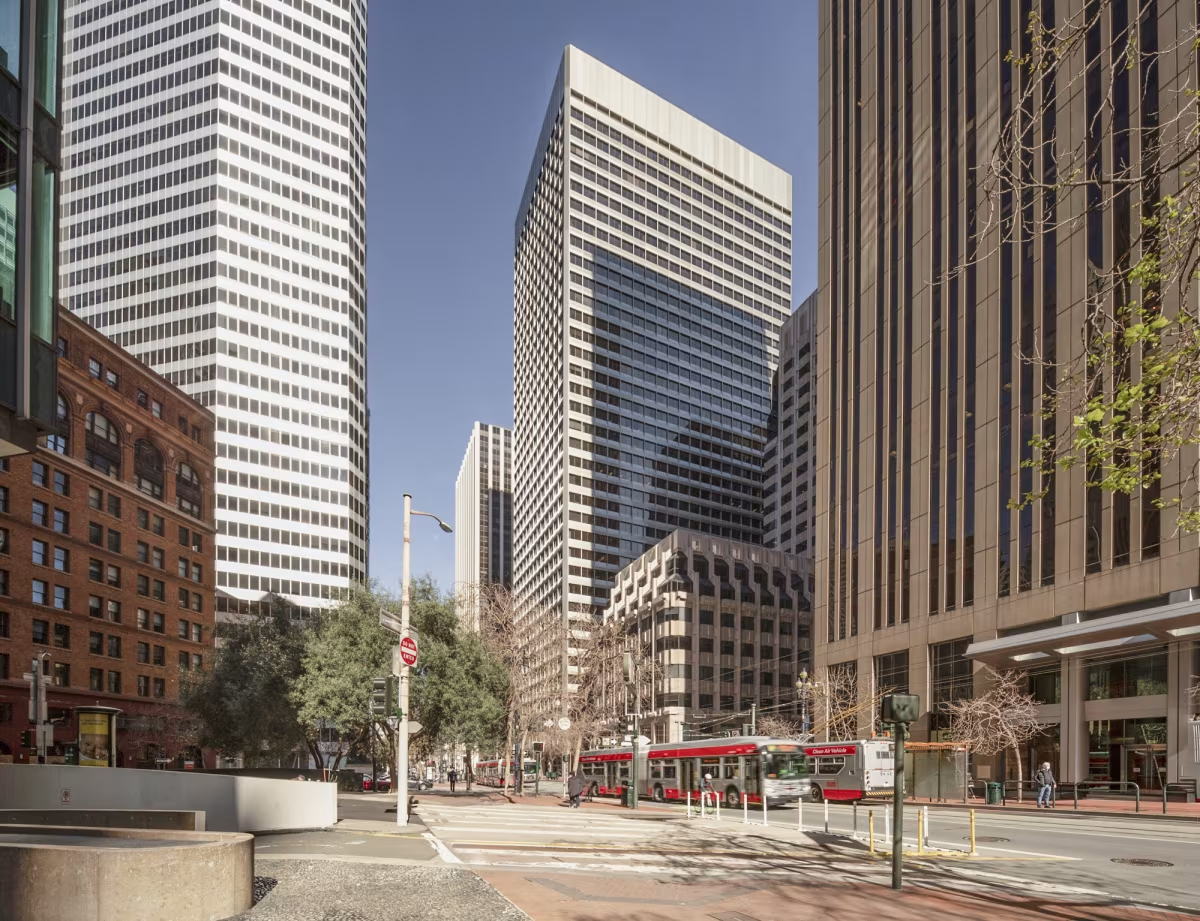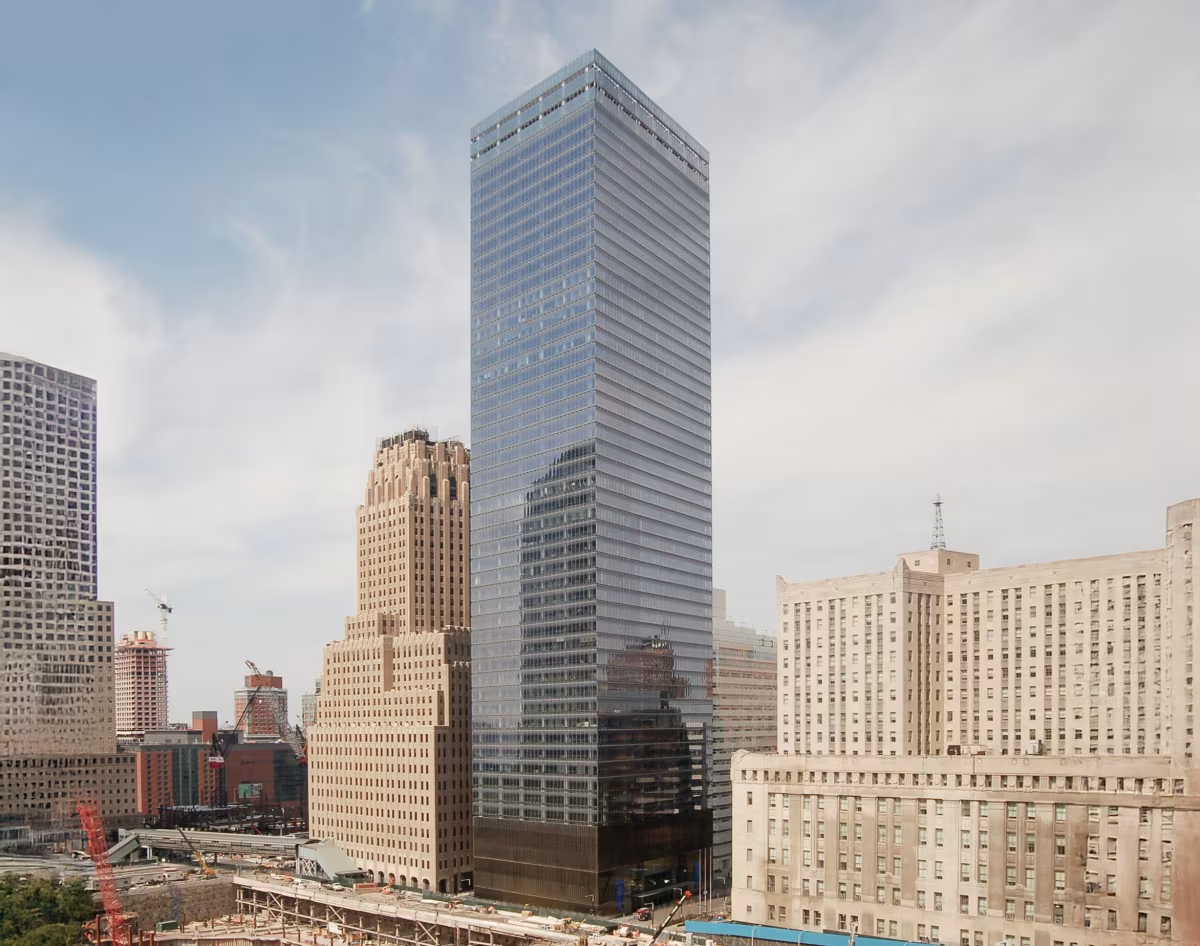425 Market Street Building vs 7 World Trade Center


Comparing the 425 Market Street Building and the 7 World Trade Center is compelling because they were both designed by Skidmore, Owings & Merrill, yet they stand in different cities (San Francisco, CA and New York, NY), and were completed over two decades apart.
What this will allow us to see, is how the same firm's approach adapted to different places in different periods of time.
Height & Size
The 7 World Trade Center is clearly the larger tower of the two, both in terms of height and number of floors. It rises to 741ft (226m) with 51 floors above ground, while the 425 Market Street Building reaches 525ft (160m) with 38 floors above ground.
7 World Trade Center also offers more total built-up area, a total fo 1,681,117 sqf (156,181m2), which is about 581,121 sqf (53,988m2) more than what the 425 Market Street Building offers.
Of course, each project may have faced different briefs or regulatory constraints, which we don't really know about and could also explain the outcome.
Architectural Style
The 425 Market Street Building was designed in the International Style style, while the 7 World Trade Center reflects the principles of Contemporary.
The 425 Market Street Building represents a late expression of the International Style, a style already in decline in 1973 when it was completed. By contrast, the 7 World Trade Center followed the then mainstream Contemporary, embodying the dominant architectural direction of its time.
With 33 years between them, the comparison also reflects how quickly architectural priorities can shift from one dominant language to another.
Uses
Both the 425 Market Street Building and the 7 World Trade Center were designed to serve as commercial towers, and that has remained their main use since their completion, serving similar roles in the urban fabric.
The 425 Market Street Building also provides 139 parking spaces.
Structure & Facade
Both towers share the same structural solution, a Frame system.
A frame structure uses a grid of columns and beams to carry the building's loads. This frees the walls from structural duties, allowing for flexible floor plans and larger windows.
However, when it comes to the facade, both buildings use different approaches. The 425 Market Street Building uses a Window Wall facade, while the 7 World Trade Center uses a Curtain Wall facade.
A Window Wall facade like the one seen in the 425 Market Street Building uses panels fitted between floor slabs, leaving slab edges visible, while a curtain-wall facade like the one seen in the 7 World Trade Center uses a lightweight glass curtain wall hung from the structure.
| 425 Market Street Building | 7 World Trade Center | |
|---|---|---|
| Skidmore, Owings & Merrill | Architect | Skidmore, Owings & Merrill |
| 1973 | Year Completed | 2006 |
| International Style | Architectural Style | Contemporary |
| Commercial | Current Use | Commercial |
| 38 | Floors Above Ground | 51 |
| 2 | Floors Below Ground | 1 |
| 160 m | Height (m) | 226 m |
| 102193 | Built-up Area (m²) | 156181 |
| 21 | Number of Elevators | 29 |
| Frame | Structure Type | Frame |
| Steel | Vertical Structure Material | Steel |
| No | Facade Structural? | No |
| Aluminum, Glass | Main Facade Material | Glass |
| Matropolitan Life Insurance Company | Developer | Silverstein Properties |
| CA | State | NY |
| San Francisco | City | New York |
| 425 Market Street | Address | 250 Greenwich Street |